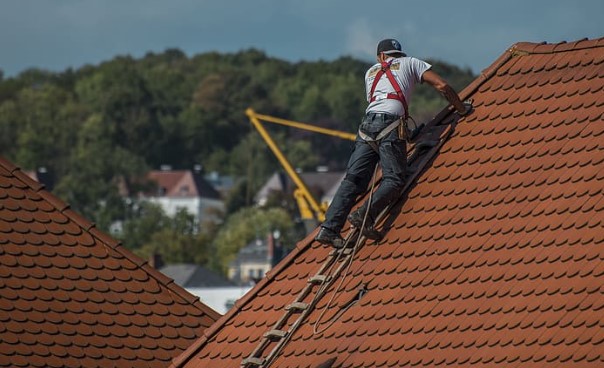Page Contents
Roof Leakage Repair
Roof leaks can cause serious damage, mold growth, and expensive roof repairs for homeowners. The early detection and repair of roof leaks are essential to preventing further damage to your home. Waterlogged attic insulation and damaged floors are all symptoms of a leaky roof, a major problem that can rapidly cascade into interior home issues.
The maintenance of your home depends on the repair of leaking roofs. Some people may not be able to take on the labor-intensive project of repairing a leaky roof. It is relatively inexpensive and has a significant return in terms of preserving your home’s value if you are willing to take on the task.
Leak Detection:
The ceiling is damaged first by a leaky roof. Ceiling plaster and paint are affected by water that makes its way from the roof to the ceiling. The ceiling paint peels off as the plaster expands. Identifying the source of a leaky roof is the first step in fixing it. It is important to locate the source of the leak back to the roof if you see water stains on the ceiling or walls.
Water stains on the underside of the roof decking or damp insulation are signs of water intrusion in your attic. Most areas require you to fix your leaky roof from late spring to mid-summer or late autumn. Before sealing your leaking roof, check the weather forecast. The next step is to identify the general area where the damage is occurring, so you can begin repairing it.
Read More – Rubber roofing: What you need to know

Repair preparations
The area must be properly prepared before you begin repairing the leak. Make sure the roof is clean and dry by removing any debris or loose shingles. Ensure the repair process is not impeded by leaves, dirt, and other debris by using a broom or a blower.
Materials and Tools Needed
Here are the materials and tools you will need to fix the roof leakage repair area:
-
Roofing cement or sealant
-
Roofing nails
-
Hammer
-
Pry bar
-
Roofing shingles
-
Utility knife
-
Roof vent (if replacing a damaged vent)
-
Roofing nails
-
Roofing paper or synthetic underlayment
-
Caulking gun
-
Ladder
-
Safety harness
-
Safety goggles
-
Chalk line
-
Circular saw
-
Gloves
Repairing minor leaks
A quick and temporary fix for minor leaks can be provided by roofing cement or sealant. Caulking guns or putty knives are used to apply the sealant to the affected area. The sealant should cover the leak completely and extend a few inches beyond the damaged area to provide an effective seal. Check for any remaining leaks after the sealant has dried completely.
Taking care of larger leaks
Depending on the severity of the roof leakage repair area, you may have to patch the damaged part. The first step is to remove any damaged shingles or roofing material around the leak. Carefully lift the shingles with a pry bar or a hammer to expose the underlying problem. Place a piece of roofing felt over the hole that is slightly larger than the damaged area. Overlap the patch over the intact shingles and secure it with roofing nails.
How to apply roof sealant?
Apply roof sealant over the patched area to reinforce the repair and provide added protection. Caulking guns or putty knives can be used to spread the sealant evenly. Cover the patch with sealant and extend it onto the surrounding shingles. As a result, a watertight barrier will be created and future leaks will be prevented.
Shingles that need to be replaced
Roofing shingles that are damaged or missing will need to be replaced if the leak is caused by them. Take care not to damage the surrounding shingles when removing the damaged shingles with a pry bar. Slide in new shingles after they have been cut to the appropriate size. Ensure that the new shingles are aligned properly with the existing ones by securing them with roofing nails.
Fixing flashing issues
Make sure, around chimneys, vents, and skylights, flashing seals gaps and joints in the roof leakage repair area. Roof leaks can be caused by damaged or improperly installed flashings. Replace any sections of the flashing that are damaged or worn out. A tight seal around the flashing should be achieved using roofing cement or sealant.
A few safety precautions
Whenever you repair a leaky roof, you should prioritize safety. Using a sturdy ladder that is securely placed and working with a partner is the best way to ensure your safety. Safety goggles must be worn to protect your eyes, and gloves must be worn to prevent injuries. When working on the roof, keep a watchful eye on the weather conditions and avoid working in adverse conditions. To prevent a fall off the side of the house, use a Personal Fall Arrest System (PFAS). Avoid reaching the unprotected roof edge by using a fixed Fall Restraint System.
Read More – Don’t Wait Until It’s Too Late: Regular Roof Maintenance
